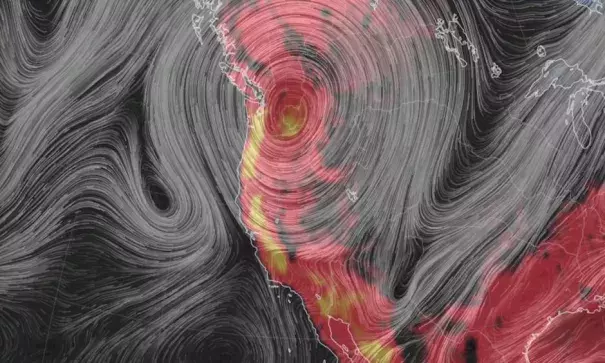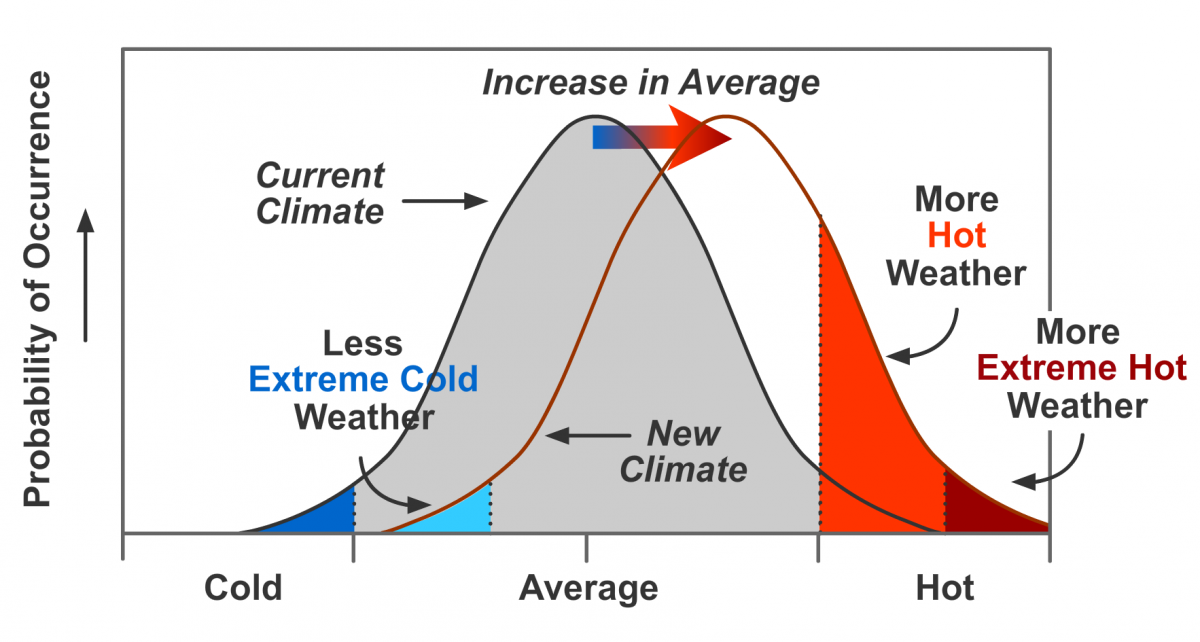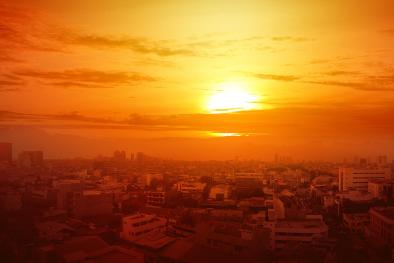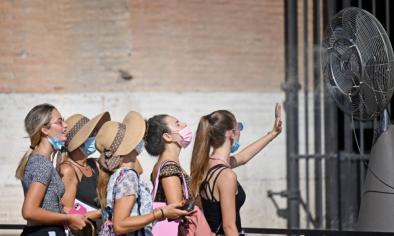Northwest Pacific Heat Wave June 2021
The most severe heat wave in the history of the Pacific Northwest and Canada gripped the region in all-time record-breaking triple-digit heat at the end of June. The heat wave was due to a major heat dome, or sprawling zone of high pressure, and bulging jet stream that sent hot air flowing into the region for several days. Both the record temperatures and record-strong high pressure system have strong ties to human-caused climate change.

Climate science at a glance
- Heat waves are more frequent across the US since the 1960s, with western regions setting records for numbers of these events in the 2000s.[1]
- Extreme heat and heat waves are the leading cause of weather-related deaths, and global warming increases the frequency, intensity, and duration of these events.
- Climate change currently causes rare heat waves to be 3 to 5°F warmer over most of the United States. By 2050, US heat waves could be an additional 3 to 5°F warmer.
- Jet stream patterns favorable for producing heat waves are becoming more common as climate change influences on the atmosphere increase.
Background: high pressure systems
Atmospheric pressure is an indicator of weather. To understand the types of weather conditions generally associated with high and low pressure systems, it helps to think “vertically.”
A high pressure system has higher pressure at its center than the areas around it. When a high pressure system develops in the upper atmosphere, the air below it sinks and compresses because there is more weight on top. This causes temperatures in the lower atmosphere to heat up. High pressure also pushes the jet stream and its drier, cooler air, farther north.
The jet stream is increasingly going off its traditional course and sometimes stalls altogether, and there is a growing body of evidence connecting this change in jet stream behavior to climate change.[3][4] When the jet stream stalls, high pressure ridges get ‘stuck’, leading to longer and more intense heat waves.
Climate signals breakdown
Climate Signal #1: Extreme heat and heat waves
 Record breaking temperatures are a classic signal of climate change. As the average global temperature rises and the climate shifts, hot temperatures that were extreme under the old climate are closer to the middle of the new temperature range.[5] Under the earth's climate system, events closer to the midpoint of the climate range occur much more frequently than events closer to the extremes, as shown in the graphic on the right. The shifting bell curve also leads to the occurrence of never-before-seen extremes in high temperatures.[6]
Record breaking temperatures are a classic signal of climate change. As the average global temperature rises and the climate shifts, hot temperatures that were extreme under the old climate are closer to the middle of the new temperature range.[5] Under the earth's climate system, events closer to the midpoint of the climate range occur much more frequently than events closer to the extremes, as shown in the graphic on the right. The shifting bell curve also leads to the occurrence of never-before-seen extremes in high temperatures.[6]
Observations consistent with climate signal #1
-
Seattle set an all-time record high of 104°F on June 27th.
-
Portland reached an all-time record high of 108°F on June 26th, then shattered that mark the very next day with a *new* all time record of 112°F on June 27th at Portland International Airport. Temperature records in Portland date back to 1940.
-
Canada saw its highest temperature ever recorded on June 27, when Lytton in British Columbia surged to 115.9°F (46.6°C), beating the previous record of 113°F (45°C) by 2.9°F (1.6°C).
Climate Signal #2: Atmospheric blocking increase
A record-breaking zone of high pressure - sometimes referred to as a "heat dome" - delivered the unprecedented heat. Intense heat domes used to be rare but have increased dramatically in recent years, a trend that is likely linked to human-caused climate change. An analysis of data since 1958 shows that almost all high-powered heat domes have occurred since 1983 — with the overwhelming majority of them occurring since 1990.
Heat domes are often the result of blocks in the jet stream when the west-to-east movement of weather slows or stops. Atmospheric blocking causes weather conditions to persist for long periods and is often behind weather extremes in the mid-latitudes.[7] Research indicates that rising temperatures may increase the frequency of atmospheric blocking events.[3] One analysis identifies an increase in the intensity of persistent high pressure areas over the entire Northern Hemisphere during the summer months from 1979 to 2010.[6]
Observations consistent with climate signal #2
-
The intensity of the heat dome is so statistically rare that it might be expected only once every several thousand years on average.
-
Unusually high temperatures at both the surface and far above the ground are an indicator of the intensity of high pressure systems. Temperatures above the ground broke records at 5,000 feet, and higher, where airplanes fly.
-
The heat dome reached record heights.
Climate signal #3: Heat Stress Increase
Exposure to extreme heat is already a significant public health problem and the primary cause of weather-related mortality in the US.[5] As temperatures rise due to global warming, people's exposure to extreme heat conditions increases.[6] The dramatic increase in nighttime temperatures in the US is particularly concerning, because cooler nighttime temperatures provide an important window of relief during heat waves.[2]
Observations consistent with climate signal #3
- During the heat wave, there were over 600 more deaths than typical for late June in Oregon and Washington.
- On June 28th, there were over 1,000 heat-related visits to emergency rooms in Washington, Oregon, Idaho, and Alaska.
- Canadian authorities said the historic heatwave gripping the Pacific Northwest caused “unprecedented casualties,” as a fourth day of historic heat spread searing temperatures inland even as some relief arrived for coastal areas. At least 233 people in British Columbia died from June 25 to June 29, twice the usual number reported to the coroner’s office over a four-day period.
- The deaths of five people in King and Snohomish Counties, in Washington, and a farm worker in St. Paul, Oregon, were blamed on the heat. Heat exposure is suspected in another four deaths in Puget Sound City, Wash., and the deaths of two people without homes in Bend, Oregon, but has not been definitively determined. More than 1,100 people in Washington and Oregon sought treatment at hospitals for heat-related illness.
- More than 1,100 people in Washington and Oregon sought treatment at hospitals for heat-related illness.
- In Portland, Oregon, Multnomah County Health Officer Dr. Jennifer Vines said in a statement: “This is life-threatening heat. People need to find someplace cool to spend time during the coming days. And for people who already have somewhere cool, their job is to reach out to other people. Ask them to join you, or help them get to a place that is reasonably cool.”
- Emergency room visits for heat-related illness spiked in Multnomah County during the heat wave.










